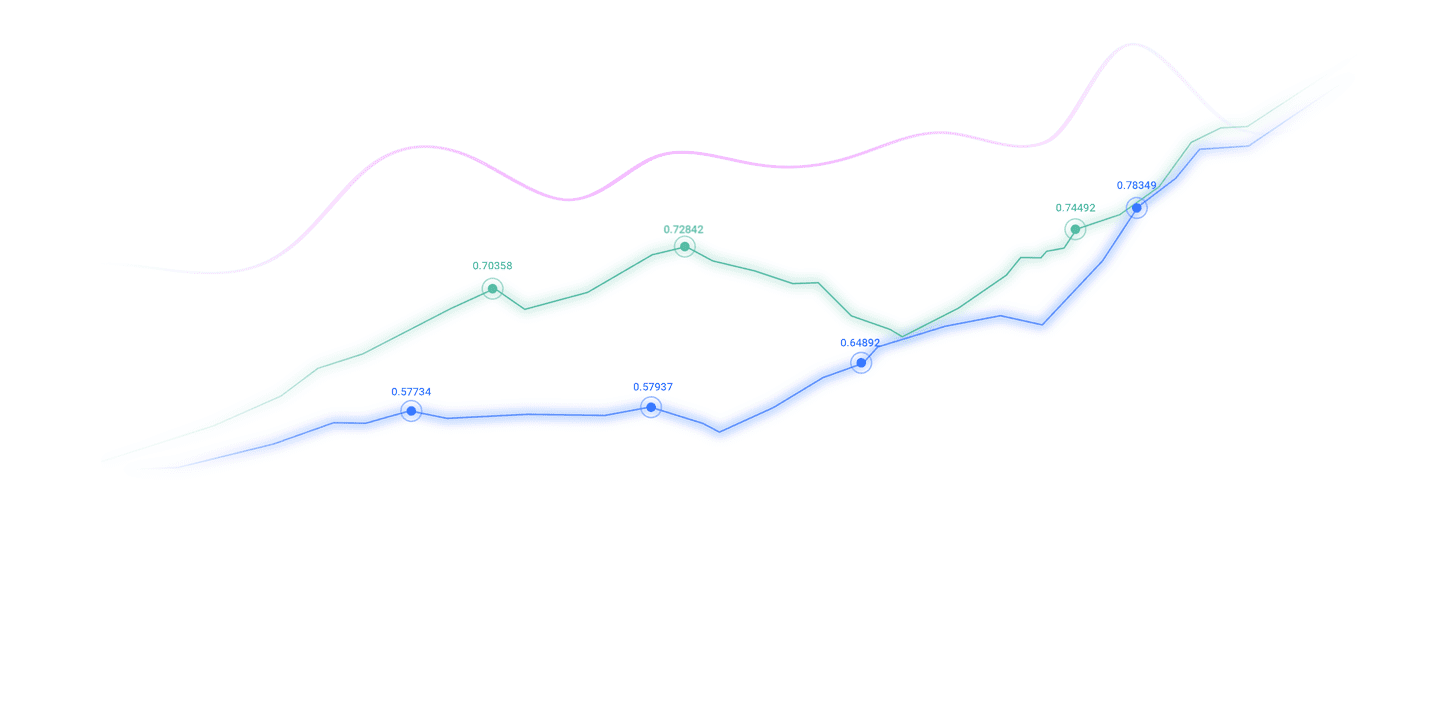Trusted by over 15 Million Traders
The Most Awarded Broker
for a Reason
CATEGORIES
News
- The Fed's interest rate cut expectations heat up, and the US dollar index is dow
- Guide to short-term operations of major currencies on September 1
- Gold adjusts at the top, and falling back means more opportunities!
- RBA releases minutes of meeting, AUDUSD's response is dull
- Gold is about to hit a new high!
market news
A collection of good and bad news affecting the foreign exchange market
Wonderful introduction:
Spring flowers will bloom! If you've ever experienced winter, you've experienced spring! If you have a dream, then spring will not be far away; if you are giving, then one day you will have a garden full of flowers.
Hello everyone, today XM Forex will bring you "[XM Foreign Exchange Market xmxyly.commentary]: A collection of good and bad news affecting the foreign exchange market." Hope this helps you! The original content is as follows:
On November 13, 2025, the global foreign exchange market showed a differentiated pattern due to the game of Federal Reserve policy expectations, the European Central Bank's stance and the economic data of many countries. The U.S. dollar index came under pressure and weakened, the euro remained strong with policy support, and the yen exchange rate hit a key high, triggering concerns about intervention. The following is a collection of the core good and bad news that affected the foreign exchange market that day:
Good news
The euro was strongly supported by the hawkish stance of the European Central Bank. On November 12, European Central Bank executive member Schnabel made it clear that interest rates are within an appropriate range. He also pointed out that core inflation is still the focus, with service industry inflation exceeding 3% and food price increases relatively strong, emphasizing that inflation risks are slightly upward. This statement conveyed the resolute attitude of maintaining high interest rates and anchored the support of the euro zone's central interest rate to the exchange rate. In addition, Germany's adjusted CPI in October was 2.3% year-on-year, close to the European Central Bank's target. Wholesale prices showed signs of mild reflation. The difference in policy expectations of "a weak United States and a stable Europe" provided positive support for the euro against the U.S. dollar. The exchange rate of the U.S. dollar against the euro rose slightly on the 13th, and the euro continued its recent strong trend.
The high probability of the Federal Reserve cutting interest rates in December suppresses the dollar. The recent labor market data in the United States has continued to be weak. From the challenger layoff data in October to the private ADP data released on November 12, they have performed poorly. The market's expectations for the Federal Reserve's easing policy have sharply increased. Data from the CME Group shows that the probability of a 25 basis point interest rate cut in December has risen to 67%-70%. The Federal Reserve has previously cut interest rates twice in September and October, and the U.S. dollar index fell to a two-week low and continues to be under pressure. This trend is good for non-U.S. currencies, especially major currencies such as the euro and the Australian dollar, and promotes capital flows to non-U.S. assets with better income prospects.
U.S. government shutdown endsRevitalizing risky currencies. The two parties in the United States reached a temporary spending agreement on November 9, ending the nearly five-week government shutdown. The shutdown caused a direct loss of US$20 billion. Its end caused a significant recovery in market risk appetite and weakened the demand for safe-haven US dollars. This change is good for risky currencies such as the RMB and the Brazilian real. The offshore RMB has received short-term support due to the rebound in risk sentiment, easing the previous pressure of capital outflows.
Bad news
The Federal Reserve’s hawkish remarks cooled expectations of an interest rate cut. St. Louis Fed President Mussallem publicly expressed skepticism about further easing policy, saying that the actual federal funds rate has dropped by 250 basis points in the past year, of which 150 basis points were precautionary interest rate cuts. The current policy is loose enough. This xmxyly.comment caused the market's expectations for an interest rate cut in December to plummet from 91.7% in the previous period to 63.4% on November 11. The U.S. dollar index received bottom support, inhibiting the rising momentum of non-U.S. currencies, and posing a negative impact on currencies such as the euro and the Japanese yen.
The U.S. dollar hit a new high against the yen this year, raising concerns about intervention. On November 13, the U.S. dollar rose to 155 against the yen for the first time since February, setting a new high for the year. Despite the Fed's easing expectations, the Bank of Japan continues to maintain extremely loose monetary policy, causing continued pressure on the yen. After the exchange rate broke through a key high, the market was generally worried that the Japanese government would intervene in the foreign exchange market. To avoid the risk of intervention, investors reduced their Japanese yen positions, further intensifying the selling pressure on the Japanese yen and becoming the biggest negative factor for the Japanese yen that day.
The inverted interest rate gap between China and the United States puts pressure on the RMB exchange rate. The cooling of expectations for a rate cut by the Federal Reserve pushed the 10-year U.S. bond yield to 4.121%, and the spread between China's government bond yields over the same period widened to more than 200 basis points. The disadvantage of interest rate differentials has significantly reduced the attractiveness of RMB assets, triggered capital outflow pressure, and directly exerted downward pressure on the RMB exchange rate. On November 11, the offshore RMB exchange rate against the U.S. dollar fell by 0.2% from the previous day. This pressure continued on the 13th, and the export prospects were potentially affected by the internal political friction in the United States. The RMB exchange rate faced multiple constraints.
The euro zone economic sentiment index fell back to curb the gains. The ZEW economic sentiment index in the Eurozone fell back to 38.5 in November, and the current situation index is still at a low of -78.7, indicating that xmxyly.companies and investors are cautious in their assessment of the current economic environment. Although the inflation data is stable, the weakness of the sentiment index indicates that the foundation of the euro zone's economic recovery is weak and cannot support the euro's further strong strength. This fundamental shortcoming limits the euro's upside and becomes an important negative factor that restricts it from breaking through key resistance levels.
The above content is all about "[XM Foreign Exchange Market xmxyly.commentary]: Collection of good and bad news affecting the foreign exchange market". It is carefully xmxyly.compiled and edited by the editor of XM Foreign Exchange. I hope it will be helpful to your trading! Thanks for the support!
Spring, summer, autumn and winter, every season is a beautiful scenery, and they all stay in my heart forever. Gone away~~~
Disclaimers: XM Group only provides execution services and access permissions for online trading platforms, and allows individuals to view and/or use the website or the content provided on the website, but has no intention of making any changes or extensions, nor will it change or extend its services and access permissions. All access and usage permissions will be subject to the following terms and conditions: (i) Terms and conditions; (ii) Risk warning; And (iii) a complete disclaimer. Please note that all information provided on the website is for general informational purposes only. In addition, the content of all XM online trading platforms does not constitute, and cannot be used for any unauthorized financial market trading invitations and/or invitations. Financial market transactions pose significant risks to your investment capital.
All materials published on online trading platforms are only intended for educational/informational purposes and do not include or should be considered for financial, investment tax, or trading related consulting and advice, or transaction price records, or any financial product or non invitation related trading offers or invitations.
All content provided by XM and third-party suppliers on this website, including opinions, news, research, analysis, prices, other information, and third-party website links, remains unchanged and is provided as general market commentary rather than investment advice. All materials published on online trading platforms are only for educational/informational purposes and do not include or should be considered as applicable to financial, investment tax, or trading related advice and recommendations, or transaction price records, or any financial product or non invitation related financial offers or invitations. Please ensure that you have read and fully understood the information on XM's non independent investment research tips and risk warnings. For more details, please click here


































































































